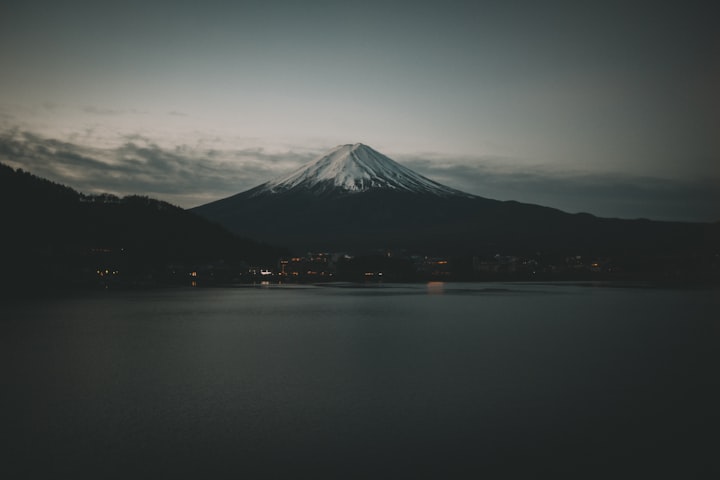Chancing on Basho
a lonely poet in Sendai, Japan

It was still chilly in late March. Sendai, Japan is on the north east end of the Island of Honshu. Frigid winds blow down from Siberia and whip south east across Hokkaido and northern Honshu sometimes well into May.
I had only been in Japan for a few days and was suffering from jet lag, tryung to adjust to my new job as an English teacher, and being immersed in a brand new culture I didn’t know much about.
My tiny one bedroom apartment, actually one bedroom/living room apartment in all its dark and musty glory sat twelve blocks from the English school I now taught at, one block from Kokoban Cho(neighborhood), Sendai’s red-light district, and two blocks from Hirose Park which bordered the Hirose River. My, at that time fiance (now wife), had helped me move in three days earlier before taking the bullet train back to Nagoya, her home town, some five hours away. I had kissed and hugged her onto the train as she cried. I tried to put on a brave face, but wanted to curl up in a ball right there on the platform and cry myself to sleep.
I was truly alone in Japan. At 33 years old, having never lived outside of the US and barely even traveled outside of it, Mexico for a day trip and up to Vancouver and British Columbia many times, Hawaii and Alaska, but that was it though. Billings, Montana was the furthest east I’d ever been at that point.
From my third floor balcony I could just see the edge of Hirose Park. The thick evergreens marching along the rough hills above the river reminded me of my home near Seattle. I decided to take my notebook and pen and go for a walk in the park along the river.
I passed by the narrow streets of Kokoban Cho. It was quiet and deserted faintly reeking of the stacked red burnable garbage bags sitting on the sidewalks. The rows of neon signs running up the 3–7 story buildings advertising girls were dull without their lights on. And there was no darkness for them to draw drunk salary men in with. I hurried past and continued on towards the park.
A busy four-lane road runs down a hill towards the Hirose River Valley that marks the west side of the park. Out behind the valley high mountains, all still snow capped, stack their way north. On the hill to my left is Tohoku University and the ruins of Sendai Castle.
At a bridge across the river I take some stairs that lead down into the park. Their is a bronze plaque and a “Statue of Liberty” green copper statue of two Portuguese Jesuits who drowned in the river in the 1600’s after being summoned from their monastery in the mountains by the ruling Daimiyo at the time. As I finish reading it I wonder which was worse, drowning in the icy winter river or facing punishment from the local authorities during the 16th century in Japan. Crucifixion being the most common form of “justice” at that time.
Continuing on I can see the jagged rock shooting up through the sandy ground, evidence of past geological violence that occasionally dances with the massive fault line just off the coast Miyagi Prefecture. I’m surprised by a thick stand of bamboo mixed in with the evergreens. Tough and resilient they stand in their deep greens like infantry among the tall pines and cedar siege engines.
In a clearing on top of a small hill in the park I can finally see the river. My fly fishing instincts kick in and I scan the water for rising trout, but see none. The river is still low and deep winter clear; so different from my home waters near Seattle that would be the color of a coffee latte now with the spring run off. I am happy though to see a large black carp making its way up stream stirring up clouds of mud as it roots along the bottom for food.
The wind is blowing south east and I can smell the cedar trees, a nice reminder of home. Then I look down at the river again, thinking of the upper Nooksack River flowing down from Mt. Baker. I say quietly, “This isn’t my river and maybe I’m not supposed to be here.”
I walk a little further watching my feet as I struggled with indecision. Had I made a mistake coming all this way to Japan? Or was anxiety getting the best of me? Back at my apartment the first draft of my novel was waiting for its first edit. I was hoping that it would be my exit strategy, a way to write for a living rather than teach. But I also knew that there was mostly likely years of work left on it before it would be ready to even submit to literary agents or publishers, something I didn’t even really know how to do yet.
I walked though a thicker stand of bamboo. It was shady in here and the wind was rattling the tall bamboo. I noticed a very old looking stone stairway leading down to the river. I was about to follow it down to the river when I saw at the top of the stairs, embedded in the ground, a small plaque. It read, in English and Japanese,
“It is believed Matsuo Basho stood at this spot in June 1689.”
I don’t know why, but I found standing in the same spot as the great Haiku master once stood very comforting. I didn’t know much about Basho at that point other than the few times he had been mentioned in the English Lit classes I had taken in college. I did know however, that he was considered the greatest Haiku poet of all time.
The wind was still cool and the bamboo still rattled loudly, but standing there and realizing that I had somehow landed in Japan where the great Haikujin had once visited reassured me that I could find a way to make a life here.
I walked down the stairs to the edge of the river, sat on a jagged boulder, pulled out my notebook and began to write.
About the Creator
Steve B Howard
Steve Howard's self-published collection of short stories Satori in the Slip Stream, Something Gaijin This Way Comes, and others were released in 2018. His poetry collection Diet of a Piss Poor Poet was released in 2019.






Comments
There are no comments for this story
Be the first to respond and start the conversation.